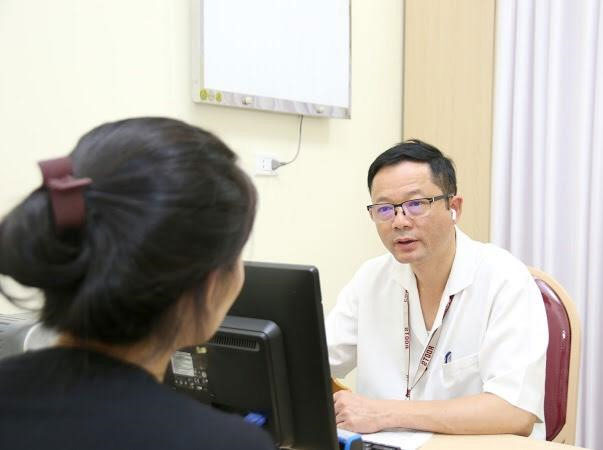Unpredictable complications of urinary stones
If not detected early and treated promptly, urinary stones can lead to urinary infections, pyelonephritis, even kidney failure.
Prof. Dr. Do Truong Thanh - Head of Urology Surgery Department, Viet Duc Friendship Hospital - said urinary stones accounted for 45-50% of urological diseases in Vietnam. The rate of male (60%) is higher than that of female (40%), the age group is 30-60 years old, accounting for 75-80%. If not detected early and treated promptly, the disease will have unpredictable complications such as urinary infections; pyelonephritis, interstitial nephritis, stenosis of nephropathy; pyelonephritis, fluid retention, pyelonephritis, renal abscess; Renal failure due to bilateral kidney stones causes obstruction.
Geographic factors, climate and diet affect the formation of kidney stones. Causes of stone formation include metabolic disorders causing hypercalcaemia and urinary; changing urine pH; Congenital urinary tract malformations or urinary tract stenosis cause stagnation of urine to facilitate formation of stones. Most cases of calcium stones of unknown origin, some increased due to diet, pathology.

Associate Prof. Dr. Do Truong Thanh examined patients.(Photo: BSCC).
Assoc. Prof. Dr. Thanh recommended that when there are signs of illness, people need to seek medical facilities and hospitals with adequate professional diagnosis and treatment. Common clinical symptoms such as:
- Dumbness of the waist when kidney stones or coral stones are not obstructing. Sometimes asymptomatic patients are found kidney stones during a routine health check.
- Kidney colic is typical when the stone obstructs the ureteric kidney. Pain spreads to the pelvis, scrotum accompanied by vomiting and abdominal distention.
- Urination due to moving stones during movement or infection causes damage to the mucosa of the renal pelvis.
- When there is urinary tract infection: The patient has a fever of 38-39 degrees Celsius, big kidney pain, cloudy urination and sometimes having septic shock, sweating, purple body raised and hypotension.
- The physical examination revealed a large kidney pain when the grave blocked congestion.
- Some cases of late arrival found that the lumbar region had swollen kidney stones caused by obstructive stones that caused pus accumulation, inflammation around the kidneys or saw lumbar pus caused by abscesses around the kidneys were broken behind the peritoneum and out skin.
For prevention and monitoring after treatment of kidney stones , patients need to have a diet high in water per 2 liters / day, limiting foods high in calcium, oxalate such as milk and tea.
In particular, for patients with kidney stones, monitoring after treatment is very important to control the progression of kidney stones. Patients need to go for regular checkups to detect recurrent kidney stones or complications, sequelae after intervention to plan active treatment and prevent recurrent kidney stones.
- Urinary stones and dangerous complications
- 11 complications of unpredictable dangerous thyroid failure need to know
- Things to know about cutaneous kidney stones
- Is urinary bleeding dangerous? What disease warnings?
- What to do to prevent kidney stones?
- Bladder stones can cause kidney failure
- Recreate urinary tube from patient cell
- All you need to know about kidney stones
- Abuse of corticosteroids, eye drops containing corticosteroids: Unpredictable complications
- Signs of urinary tract cancer
- 6 signs of female urinary tract infection should know
- The new method allows two kidneys to be removed at the same time
 13 causes of non-itchy rash
13 causes of non-itchy rash How the mouse with human ears changed the world?
How the mouse with human ears changed the world? The truth about 'fried rice syndrome!
The truth about 'fried rice syndrome! What is dental implant?
What is dental implant?